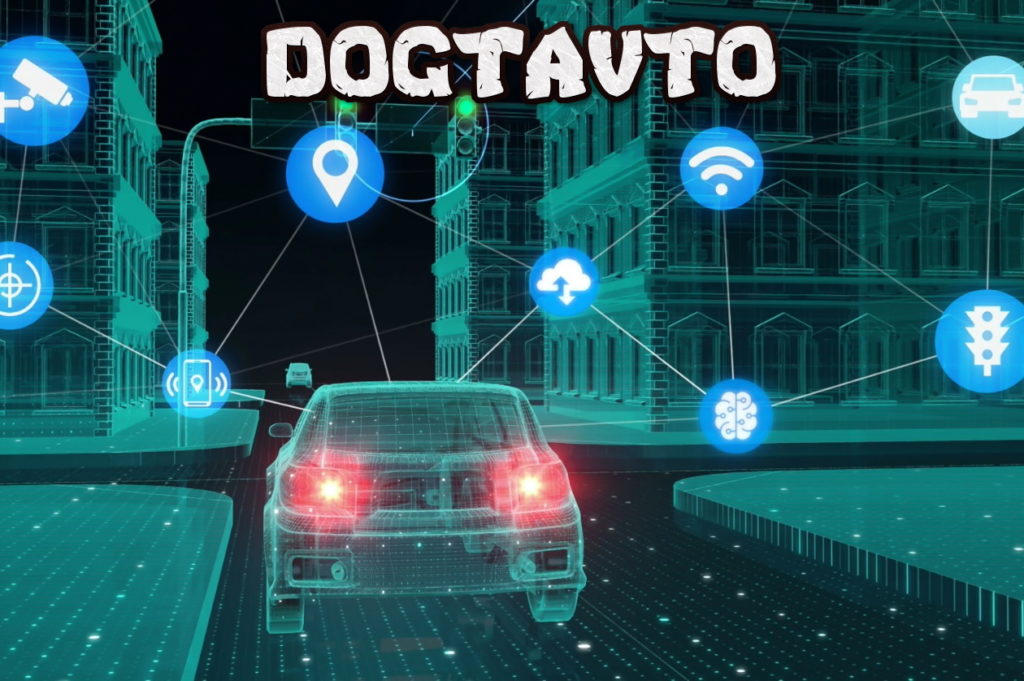Internet of Things (IoT)
Internet of Things (IoT): cars are becoming increasingly connected, with networked capabilities that allow them to interact with other IoT devices and share data to improve driver safety and comfort.

The Internet of Things (IoT) is a concept whereby all physical objects are connected to the Internet and can communicate with each other. In the automotive industry, the IoT plays an important role in the creation of “smart” cars.
IoT technology makes it possible to equip cars with various sensors and devices to collect and transmit data. For example, sensors can monitor vehicle conditions, such as fuel level, tire pressure and engine condition, and transmit this data to a server to analyze and prevent breakdowns and accidents.
IoT also allows cars to interact with other IoT devices. For example, a car can connect to a smart home device and transmit information about its location so the device can turn on a light or open a door. It can also receive traffic and weather data from other IoT devices and use that information to optimize its route.
The use of the Internet of Things in the automotive industry also opens up new possibilities for creating safer cars. For example, cars can be equipped with collision warning systems that use sensors and data from surrounding vehicles to warn drivers of potential danger.
In general, IoT technologies make cars smarter and more connected, increasing safety and comfort for drivers and passengers. They can also improve vehicle efficiency and optimize the use of resources, such as fuel.
Application of the Internet of Things in the automotive sector:
1. Vehicle Condition Monitoring Systems: With sensors attached to various vehicle components such as the engine, brake system and cooling system, operational data can be collected and transmitted to a server for analysis. This allows fleet operators and vehicle owners to monitor the condition of the vehicle and prevent possible breakdowns.
2. navigation and route optimization systems: vehicles can receive data on factors that can affect travel time and safety, such as traffic congestion and weather. Navigation systems can use this data to suggest the best route to avoid congestion and dangerous weather conditions.
3. collision warning systems: cars can use sensors and cameras to detect other vehicles and obstacles in the road. If the system detects a potential collision, it can warn the driver with audible or visual signals and, in some cases, apply automatic braking to avoid the collision.
4. energy management systems: With IoT technologies, vehicles can optimize the use of resources such as fuel and electricity. For example, cars can automatically shut off the engine when idling to reduce fuel consumption or regulate electricity consumption depending on the current battery level.
5. parking management systems: Using IoT technology, cars can communicate with parking management systems to find free spaces and automatically park. This reduces the time it takes to find parking spaces and increases the efficiency of parking space utilization.
Some of the car manufacturers that have successfully used IoT technology in the automotive sector:
1. Tesla Tesla is actively using IoT technology in its electric cars. It has a vehicle condition monitoring system that collects operational data from various vehicle components and transmits it to a server for analysis. Tesla also offers a navigation and route optimization system that uses data such as traffic congestion to recommend the best route.
2.BMW: BMW offers a collision warning system that uses sensors and cameras to detect other cars and obstacles in the road. If the system detects a potential collision, it warns the driver and can automatically apply the brakes.
3.Ford: Ford is also successfully using IoT technology in its cars. The company offers a parking management system that allows cars to interact with the parking management system to find available spaces and park automatically.
4.General Motors GM uses IoT technology to monitor vehicle health and collision avoidance systems. It also provides energy management systems to optimize the use of vehicle resources.
These are just a few examples of how car manufacturers are successfully using IoT technology in the automotive industry. Every year, more and more companies are adopting such solutions to improve the safety, comfort, and efficiency of their vehicles.
Vehicle models produced by these automakers include the following.
1. Tesla: Model S, Model 3, Model X, Model Y
2. BMW: 3 Series, 5 Series, X3, X5, i3
3. Ford: Focus, Fusion, Mustang, Explorer, F-150
4. General Motors: Chevrolet Bolt EV, Chevrolet Silverado, GMC Sierra, Cadillac CT6
These are just a few examples, with each automaker offering a wide range of vehicles with different features and functions.

